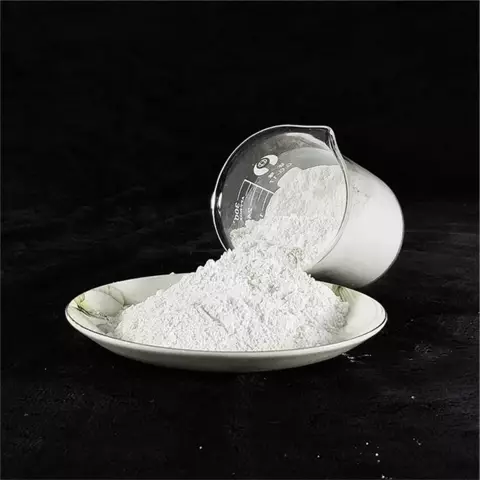- Author Rachel Wainwright [email protected].
- Public 2024-01-15 19:51.
- Last modified 2025-11-02 20:14.
Mastoiditis
The content of the article:
- Causes of mastoiditis
- Forms of the disease
-
Disease stages
- Exudative stage
- Proliferative stage
- Symptoms of mastoiditis
- Features of the course of the disease in children
- Diagnostic methods
-
Treatment of mastoiditis
- Conservative treatment
- Operative treatment
- Complications and consequences
- Forecast
- How to prevent the development of mastoiditis
- Video
Mastoiditis is an inflammation of the mucous membrane, periosteum and bone tissue of the mastoid process. The mastoid is the part of the temporal bone that contains air-filled cells. The process borders on the eardrum, and it is from there that the infection most often spreads. The disease can develop at any age, but children under 7 years of age and young people aged 20-29 are more likely to get sick.

Mastoiditis - inflammation of the mastoid process of the temporal bone
Causes of mastoiditis
The main reason for the development of the disease is the ingress of microorganisms into the mastoid process. Microflora with mastoiditis is diverse: hemolytic and greening streptococcus, Staphylococcus aureus, pneumococcus, Escherichia coli, Pseudomonas aeruginosa. The penetration of infection can occur in several ways:
- otogenic - the infection spreads from the middle ear (with otitis media);
- hematogenous - the introduction of bacteria occurs with the blood flow from another focus of inflammation (with sepsis);
- traumatic - the penetration of the infection through bone cracks (with impacts, bruises and fractures of the temporal bone, gunshot wounds).
The predisposing factors that contribute to the development of inflammation of the mastoid process include any immunosuppressive conditions: frequent infections, hypothermia, lack of proteins and vitamins in the diet, chronic debilitating diseases.
Forms of the disease
Due to the occurrence, there are primary and secondary forms of the disease. Secondary mastoiditis is more common and develops as a complication of otitis media. In the primary form, the inflammatory process develops without previous otitis media, for example, after an injury.
By the nature of the course, an acute and chronic form of the disease is distinguished. Acute mastoiditis is much more common and can be complicated by the transition to a chronic form. Chronic mastoiditis can develop without prior acute inflammation, such as chronic otitis media, but this is rare.
Separately, atypical forms of the disease are distinguished, the occurrence of which is associated with the peculiarities of the structure of the mastoid process - mastoiditis of Bezold, Orleans, Mouret, Cittelli, petrositis, acute zygomatizitis, etc.
Disease stages
There are two stages in the development of inflammation in acute mastoiditis - exudative and proliferative.
Exudative stage
The exudative (initial) stage is characterized by superficial changes and lasts 7-10 days of illness. Inflammation in the exudative stage affects only the mucous membrane and periosteum, the bone is not involved in the inflammatory process. The mucous membrane swells, the openings of the cells are closed and their cavities are filled with exudate. The communication of the cells with the mastoid cave and the tympanic membrane is disrupted, which leads to the termination of their ventilation.
Proliferative stage
The proliferative stage usually begins on the 7-10th day of the disease, but in children it can develop earlier, its duration is 2-3 weeks. In the second stage, the formation of granulations and the destruction of bone tissue occurs. Bone septa melt, cells fuse and form one large cavity filled with pus.
Symptoms of mastoiditis
Symptoms of mastoiditis most often occur 2-3 weeks after the development of acute otitis media. The onset of the disease is usually acute, the first intoxication symptoms occur:
- increased body temperature;
- deterioration of the general condition;
- headache;
- weakness, lethargy, fatigue.
Then local symptoms appear, the main of which is pain in the area of the mastoid process. Characteristics of pain syndrome in mastoiditis:
- pain is localized behind the auricle;
- radiates to the temple, jaw, eye socket, can cover the entire half of the face;
- constant, not worse when chewing;
- has a pulsating character.
With mastoiditis, redness and swelling of the skin in the behind-the-ear region, protrusion of the auricle are determined. With the formation of a subperiosteal abscess, fluctuation and sharp pain in the area of the mastoid process is determined.
In addition, hearing loss and tinnitus are characteristic of mastoiditis. In some cases, suppuration occurs from the external auditory canal.
Features of the course of the disease in children
The mastoid process finally develops only by 5-6 years of a child's life. In young children, only the cave (antrum) is expressed in the structure of the appendix, therefore the disease is called antritis (inflammation of the cave).
In children, the disease develops quite often and often has a severe course. This is due to the peculiarities of the anatomical structure of this area:
- short and wide auditory tubes;
- high location of the antrum;
- myxoid tissue in the middle ear;
- frequent disturbances in breathing through the nose in childhood.
All these features create preconditions for poor ventilation, obstruction of the outflow of fluid and the rapid attachment of bacterial flora.

Mastoiditis in children is not uncommon
Diagnostic methods
Diagnosis of the disease is based on the clinical picture and data from additional research methods. On examination, the doctor can reveal redness and swelling of the skin in the area of the mastoid process, but with a sluggish process, these changes are often absent. After examination, an otoscopy is shown, a pathognomonic sign for mastoiditis is the overhanging of the posterior-superior wall of the ear canal. Also, otoscopy reveals hyperemia of the tympanic membrane, possibly suppuration.
Additional examination of the patient with suspicion of mastoiditis includes general clinical tests, bacteriological culture of discharge from the ear, hearing examination and X-ray methods.
| Study | Results, features of the |
| Complete blood count (CBC) | In the KLA, signs of inflammation are determined - an increase in the level of leukocytes due to neutrophils, a shift in the leukocyte formula to the left, an acceleration of ESR. |
| Bacterial culture of ear discharge | Bacteriological examination of purulent discharge allows you to identify the causative agent of mastoiditis, which is important for the correction of antibiotic therapy. |
| Hearing test | To determine violations of the auditory function, studies of whispering and speaking, tuning fork tests, audiogram are used. With mastoiditis, the conductive type of hearing loss is determined. |
| X-ray methods | X-rays may include temporal bone x-rays, magnetic resonance imaging (MRI), or computed tomography (CT). CT is the most informative, but other methods can be used. |
Treatment of mastoiditis
Treatment of mastoiditis is aimed at combating infection in the mastoid process and preventing the spread of inflammation to nearby structures. The disease must necessarily be treated in a hospital setting. Treatment can be carried out using conservative and surgical methods.
Conservative treatment
Medical treatment consists of taking antibacterial agents. At the beginning of treatment, antibiotics are prescribed empirically, after receiving the results of bacteriological culture, therapy can be adjusted.
Broad-spectrum antibiotics are prescribed, the drugs of the first choice are:
- Protected penicillins: Amoxicillin / clavulanate, Ticarcillin / clavulanate.
- Cephalosporins: Cefuroxime, Cefotaxime, Ceftriaxone and Cefoperazone.
Parenteral antibiotics are preferred.
The second-line drugs are macrolides (Clarithromycin), which are prescribed if you are allergic to beta-lactam antibiotics or if they are ineffective. It is possible to use several antibiotics at once, for example, a combination of macrolides and cephalosporins.
In addition to prescribing antibiotics, detoxification therapy is carried out; in severe cases, glucocorticoids can be prescribed. With the development of sinus thrombosis, the use of anticoagulants is indicated: Heparin, Fraxiparin, Enoxaparin, etc.

Amoxicillin is a first-line drug for the treatment of mastoiditis
Operative treatment
If drug therapy is ineffective, surgery is indicated. Antibiotics are not canceled in this case. Surgical treatment allows for the outflow of purulent contents from the tympanic cavity. The least invasive methods are:
- myringotomy - a small incision in the tympanic membrane, restoring the outflow of pus;
- insertion of a tympanostomy tube.
If minimally invasive techniques are ineffective, an antrotomy is performed. Also, an indication for antrotomy is the development of complications. The operation consists in removing part of the bone and draining the tympanic cavity.
Complications and consequences
Most complications of mastoiditis are associated with the spread of infection to nearby anatomical structures - the middle ear, the labyrinth of the inner ear, the facial nerve, the sternocleidomastoid muscle, the lining of the brain, and the sinuses of the dura maze. Depending on where the infection has spread, the following complications of the disease are distinguished:
| Complication | Characteristic |
| Labyrinthitis | With the destruction of perilabyrinth cells, the inflammatory process passes to the inner ear, and labyrinthitis develops. With labyrinthitis, the receptors of the vestibular and auditory analyzers are affected. Clinically, this is manifested by impaired balance and coordination, hearing loss. |
| Inflammation of the facial nerve | The destruction of the peripheral cells leads to the fact that the inflammation goes to the facial nerve. As a result, neuritis of the facial nerve develops - paresis or paralysis of facial muscles, which leads to facial asymmetry. |
| Accumulation of pus under the sternocleidomastoid muscle | Pus can burst through the inner apex wall, drain down into the neck, and accumulate under the sternocleidomastoid muscle. In this case, the head is constantly tilted to the affected side, the pain is localized in the neck and radiates to the shoulder. |
| Meningitis | If the process of bone melting is directed towards the posterior or middle cranial fossa, pus can enter the cranial cavity. This leads to the development of dangerous complications, one of which is meningitis - an inflammation of the lining of the brain. Meningitis is characterized by intense headache, hypersensitivity to any stimuli, inability to touch the sternum with the chin. |
| Sinus thrombosis of the dura mater | With the defeat of the perisinous group of cells, inflammation can pass to the sigmoid sinus, accompanied by the development of phlebitis and thrombophlebitis. |
| Brain abscess | One of the most dangerous intracranial complications is a brain abscess. A severe course of the disease is characteristic, focal symptoms develop - convulsions, motor and sensory disorders, impaired coordination, speech, hearing or vision. |
In addition, the complications of the disease include the chronization of the process. Antibacterial agents hardly penetrate into bone structures, therefore, even after a full course of treatment, relapses are not excluded.
Forecast
With timely and adequate treatment of mastoiditis, the prognosis is favorable - complete recovery occurs. With the onset of the proliferative stage, a complete cure is no longer possible, which is why it is so important to seek medical help at early signs of the disease.
How to prevent the development of mastoiditis
Prevention of secondary mastoiditis consists in early diagnosis and timely treatment of otitis media. Adequate treatment of ENT diseases and restoration of nasal breathing in children also helps to prevent the development of mastoiditis.
Strengthening the body's immune system is important, for this purpose it is recommended to avoid hypothermia, lead a healthy lifestyle, and consume a sufficient amount of proteins and vitamins.
Video
We offer for viewing a video on the topic of the article.

Anna Kozlova Medical journalist About the author
Education: Rostov State Medical University, specialty "General Medicine".
The information is generalized and provided for informational purposes only. At the first sign of illness, see your doctor. Self-medication is hazardous to health!






